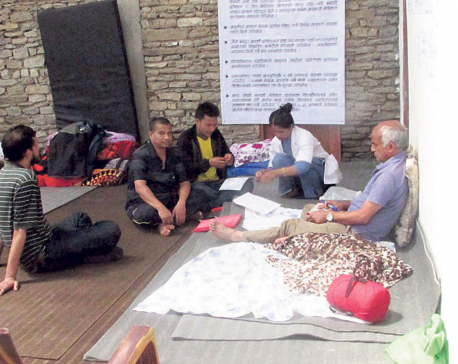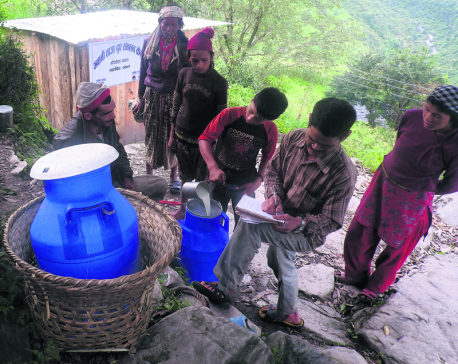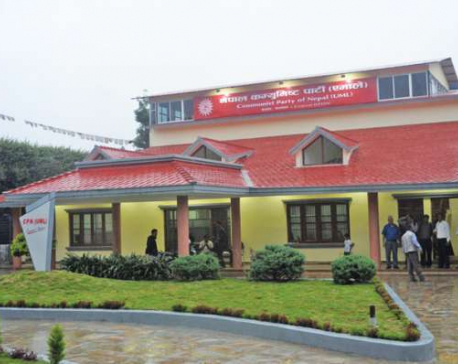
OR
Suicides in Nepal
There must not many people alive who at one point or the other have not contemplated suicide. For most of us, it’s just a passing thought. But for a tiny minority it is a serious option. Sociologists have extensively studied the trend of suicide around the world. One of their remarkable findings is that suicides take place in a cluster. This means that if few people have historically committed suicide in a society, then we can expect low suicide rates in that area in the foreseeable future as well. But there needs to be just one high-profile suicide to tip the scale in the other direction. Take the case of the suicide on January 14th of the Nepali rap sensation Yama Buddha, who had hung himself in his London flat. On January 20th, a young couple in Jhapa, who apparently wanted to marry but could not due to their caste differences, was found hanging from a single noose tied to a tree in the district’s Kankai municipality. On January 23rd, a 33-year-old man similarly hung himself to death in BPKIHS, Dharan. Then, on January 24th, a middle-aged real estate agent in Biratnagar ended his life the same way.
The famous rapper’s chosen means to end his life seemed to be catching on. On February 2nd, one boy from Jems School at Dhapakhel and another girl from St. Maries School at Jawalakhel also hung themselves to death. It’s almost like when a famous personality commits suicides other members in the society get the permission to act on their suicidal thoughts. Malcolm Gladwell, in his bestselling book, The Tipping Point, discusses the case of the tiny Pacific island group of Micronesia, whose teenagers “were literally being infected with the suicide bug, and one after another they were killing themselves in exactly the same way under exactly the same circumstance” that they had witnessed other people take own lives. Gladwell argues that just like some diseases are contagious, dangerous ideas can be as contagious. This is not to suggest that all recent suicides in Nepal are
imitation of Yama Buddha’s suicide or that his untimely death was even the major factor behind them. There were many other, case-specific factors. For instance the deaths of two school students on February 2nd have been attributed, at least in part, to complications in their love lives. The person who hung himself in BPKIHS was supposedly affected by the flailing health of his mother who was battling breast cancer.
But the tendency of dangerous ideas to spread, which is now a well-documented fact, also highlights the importance of active intervention of our schools and colleges and social institutions to better inform people, young and old, that even the most complex problems have solutions and time tends to heal even the deepest wounds. The famous suicides can be made case studies of how not to handle your problems. Despite the growing popularity of suicides, especially among the Nepali youth, the country has not been serious about properly studying them and using the lessons learned to better educate our youth on far healthier ways to solve their problems. The teachers and parents could also be instructed to try to better understand the youth rather than reflexively resort of corporeal punishment, which, all evidence suggests, is counterproductive. The recent spate of suicides suggests that there is not a moment to lose.
You May Like This

We can’t treat Dr KC at present site: Doctors
JUMLA, July 4: The medical team deployed by Karnali Institute of Health Sciences for the treatment of senior orthopedic surgeon Dr... Read More...

Where Dalits can’t buy milk
BAJHANG, April 18: Though Kalpana Nepali is aware her caste can put her in difficult position, it’s not possible for her... Read More...

Constitution can’t be amended at behest of foreign powers: UML
KATHMANDU, Aug 24: The main opposition party, CPN-UML, has concluded that the constitution can’t be amended at the interest of... Read More...





Just In
- Nepalgunj ICP handed over to Nepal, to come into operation from May 8
- Nepal to gift two elephants to Qatar during Emir's state visit
- NUP Chair Shrestha: Resham Chaudhary, convicted in Tikapur murder case, ineligible for party membership
- Dr Ram Kantha Makaju Shrestha: A visionary leader transforming healthcare in Nepal
- Let us present practical projects, not 'wish list': PM Dahal
- President Paudel requests Emir of Qatar to initiate release of Bipin Joshi
- Emir of Qatar and President Paudel hold discussions at Sheetal Niwas
- Devi Khadka: The champion of sexual violence victims



_20240423174443.jpg)










Leave A Comment